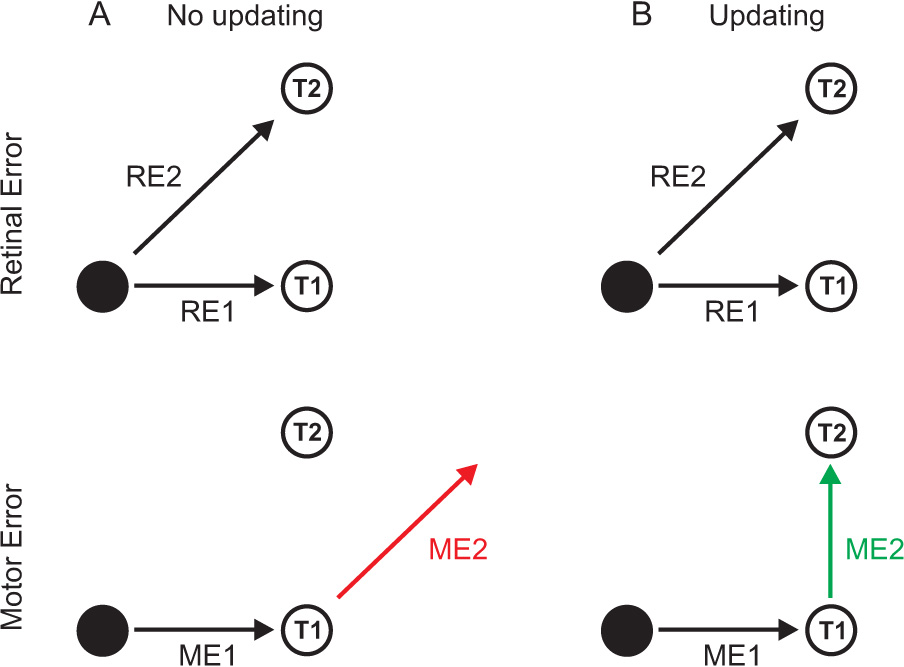Figure 2.

Spatial updating in a classic double-step saccade paradigm. When fixating a target (●), the retinal errors (RE1, RE2) caused by two other targets (T1, T2) are the same in both the no updating (A) and updating (B) conditions. A. Without updating, the movement to the first target (ME1) is made based on RE1, and the movement to the second target (red ME2) is made based on RE2. This leads to a mislocalization of T2. B. With proper updating, the movement to the first target (ME1) is based on RE1, but the movement to the second target (green ME2) is based both on RE2 and ME1. Taking the amplitude and direction of the first movement (ME1) into account leads to the correct localization of T2.
